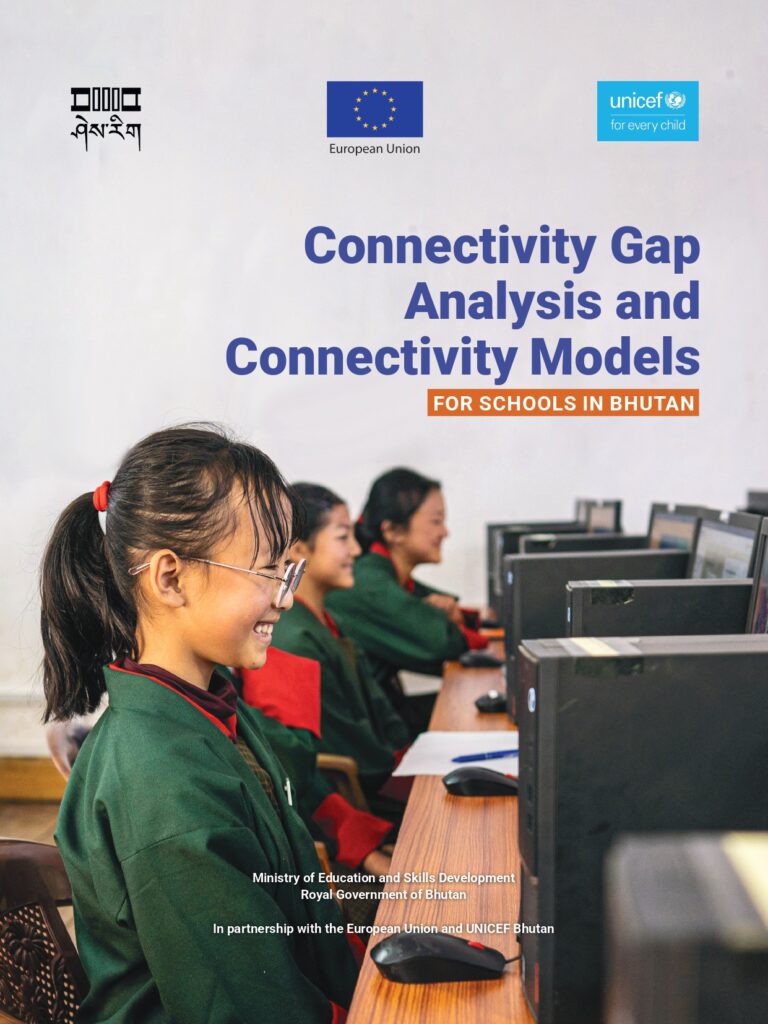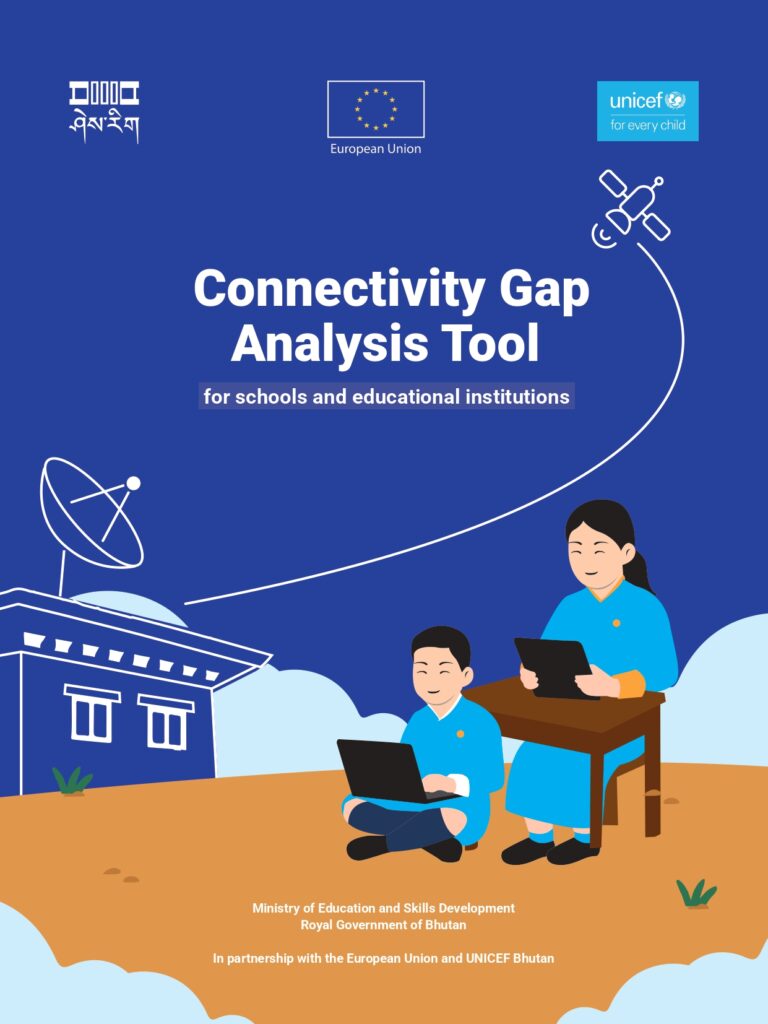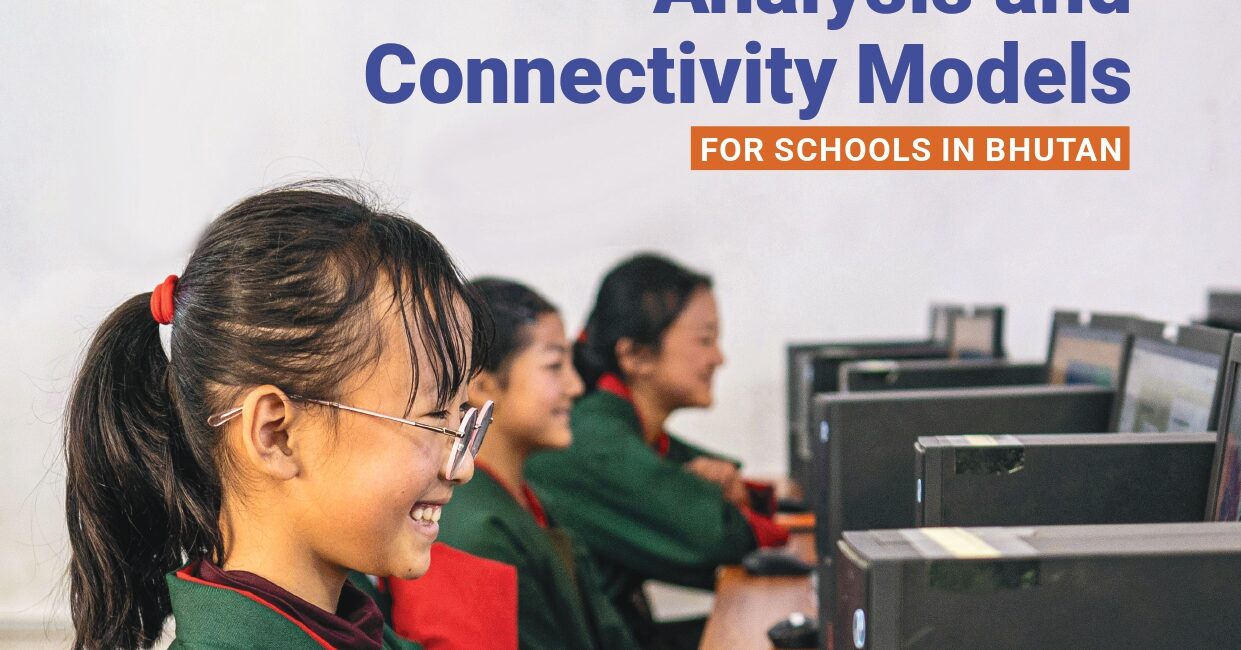The Ministry of Education and Skills Development is pleased to share a national report titled Connectivity Gap Analysis and Connectivity Models for Schools in Bhutan, representing the evidence-based assessment of school connectivity in the country.
The study was undertaken using a mixed-methods research methodology, combining quantitative survey data from more than 2,100 respondents with qualitative insights gathered through Key Informant Interviews, Focus Group Discussions, desk reviews, and field observations across multiple Dzongkhags. Respondents included Dzongkhag and Thromde Education Officers, school leaders, teachers, ICT laboratory assistants, students, officials from the GovTech Agency, Telcos, and BICMA, ensuring that the findings are nationally relevant and grounded in real school infrastructure conditions.
Developed under the EU-funded Digitalisation in Education initiative, with technical support from UNICEF Bhutan, the report provides an in-depth analysis of the current state of digital infrastructure, bandwidth reliability, device access, cybersecurity readiness, digital literacy, and policy alignment across Bhutanese schools. Accompanying the main publication are two complementary outputs: (1) the Connectivity Gap Analysis Tool, which provides MoESD, GovTech, and schools with structured survey instruments, diagnostic checklists, and data-collection templates; and (2) the Connectivity Models for Schools in Bhutan, which proposes three tiered and scalable models-Satellite-Based, Hybrid, and Smart Campus-to guide differentiated implementation across different schools.
The study revealed variations in school connectivity across regions, highlighting issues such as insufficient bandwidth, limited device access, ageing ICT hardware, and uneven Wi-Fi coverage—particularly in rural and remote schools. Policy gaps related to cybersecurity, online safety, data protection, and coordinated governance were identified as areas impacting digital learning readiness. However, the study also documented emerging good practices, including school-level initiatives to optimise limited bandwidth, locally developed digital learning strategies, and the strong motivation of teachers and ICT staff to integrate technology despite constraints.
The report recommends the establishment of minimum national connectivity standards, enforceable Service Level Agreements through GovTech, strengthened inter-agency coordination, improved funding mechanisms, and structured digital literacy development for teachers and students. It further proposes actions to improve cybersecurity protocols, expand access to digital devices, enhance locally relevant digital content, and introduce sustainable ICT support systems at the school and cluster levels. These recommendations aim to bridge the digital divide and ensure all learners can benefit from meaningful technology-enabled education.
The Ministry expresses its sincere appreciation to the European Union, UNICEF Bhutan, and the Government Technology (GovTech) Agency, for their strategic support and collaboration in the development of this national report. The Ministry remains committed to working with stakeholders to put the recommendations and connectivity models into action, ensuring scalable, equitable, and sustainable progress. Together, we aspire to build a more connected, inclusive, and future-ready education system that empowers every learner in Bhutan.
Please click the link to access the following Reports: Link
1. Connectivity Gap Analysis and Connectivity Models for schools in Bhutan
2. Connectivity Gap Analysis Tools for Schools and Educational Institutions
3. Connectivity Models for Schools in Bhutan












